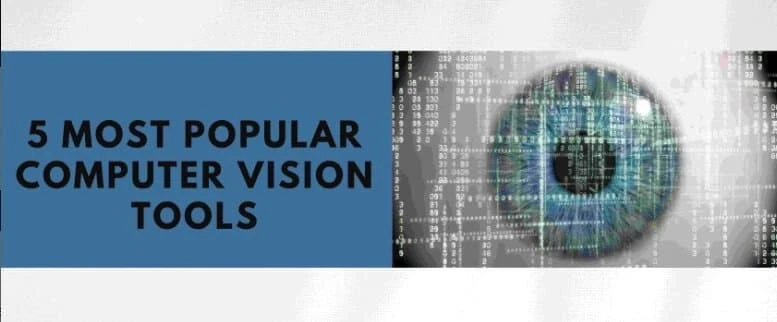Pattern recognition, object classification, motion tracking, and information extraction from visual input are all capabilities of computer vision systems. OpenCV, TensorFlow, PyTorch, and Keras are a few of the more well-known computer vision technologies. These capabilities may be used for a variety of things, including augmented reality, driverless cars, facial recognition, and medical picture analysis. Future applications and solutions will be made possible by these technologies with increased sophistication and adaptability.
With the use of such tools, which include a variety of features such as image processing, object identification, facial recognition, and picture classification, developers may more readily design complicated applications of computer vision.
OpenCV
OpenCV, also known as Open Source Computer Vision, is a computer vision library that was created for the first time by Intel in 1999. Later, in 2000, it was made available as an open-source project, and the OpenCV Foundation now looks after it.
Researchers, developers, and businesses across numerous industries frequently use OpenCV, a potent computer vision software tool.
Its key attributes include the following:
- Processing of images and videos: OpenCV offers a number of image processing solutions and videos, including filtering, transforming, and manipulating.
- Object detection and tracking: It can be utilized for real-time applications involving object identification and tracking. Among other things, it has pre-trained algorithms for pedestrian, face, and eye identification.
- Machine learning: It interfaces with a number of well-known machine learning frameworks, such as TensorFlow and PyTorch, enabling programmers to create and train unique models.
- Camera calibration and stereo vision tools are provided by OpenCV and can be used to build 3D models from a collection of photos.
MATLAB
The numerical computing environment and high-level programming language MATLAB were created by MathWorks. MATLAB is short for Matrix Laboratory. One of the most popular programmes for numerical calculation, data analysis, and visualization, MATLAB was originally made available in 1984.
MATLAB\'s primary features include the following:
- Matrix manipulation is the foundation of MATLAB\'s fundamental capability, making it simple to work with vectors, matrices, and arrays.
- Built-in features: It has a substantial collection of built-in functions for data analysis, calculation, and visualization.
- Simulink integration: Simulink is an environment for block diagrams used for simulation and model-based design.
- Simple user interface: MATLAB is excellent for both inexperienced and seasoned programmers due to its simple user interface.
TensorFlow
Researchers and engineers from the Google Brain team created the open-source machine learning framework known as TensorFlow in 2015. It is intended to make it simple and rapid for developers to create and use machine learning models.
TensorFlow\'s major characteristics include things like:
- Computations based on graphs: TensorFlow employs a graph-based method, enabling programmers to efficiently create and carry out complex computations.
- Distributed computing: It enables programmers to spread computations over a variety of hardware, including CPUs, GPUs, and TPUs, for better performance.
- Built-in support for deep learning: Convolutional neural networks, recurrent neural networks, and transformers are only a few examples of the deep learning models that are already incorporated into the system.
- Flexibility: TensorFlow is very adaptable and has a wide range of applications, including reinforcement learning, computer vision, and natural language processing.
PyTorch
As an alternative to TensorFlow, Facebook\'s AI Research team developed PyTorch as an open-source machine learning toolkit in 2016. It became one of the most well-known deep learning libraries in 2018 after being merged with the fast.ai framework and quickly gained popularity thanks to its dynamic computational graph, which was utilized in high-profile projects like OpenAI\'s GPT-2 and GPT-3 language models.Features of PyTorch:
- Dynamic computational graph: During the forward pass, PyTorch\'s computational graph is defined dynamically, making it simpler to debug and edit models.
- Automated differentiation is made available, making it simple to compute gradients for deep neural network training.
- GPU acceleration: Since it has inherent support for GPUs, running models on potent hardware is simple.
- Distributed training enables users to train models over numerous GPUs or computers.
Keras
Developers can create and train deep learning models using the Python-based high-level neural network API known as Keras. It was created by François Chollet and launched for the first time in March 2015.
For creating intricate deep learning models, Keras, which is built on top of TensorFlow, Theano, and CNTK, offers a simple and user-friendly interface. It supports many different types of neural network topologies, such as convolutional networks, recurrent networks, and hybrids of the two.
Some of the key features of Keras include:
- User-friendly: Keras is made to be simple to use and user-friendly. It enables deep learning model construction and training with little to no coding.
- Modularity: Its modular architecture enables developers to quickly swap out various neural network components.
- Portability: Models created in Keras can be run on a variety of different platforms and devices because they are designed to be portable.
- Compatibility: TensorFlow, Theano, and CNTK are just a few of the many backends that Keras can work with.
Conclusion
There is a wide range of tools available in the field of computer vision, which are rapidly evolving to address diverse application requirements. Choosing custom computer vision software development services requires considering factors such as performance, usability, accessibility, and cost because each software solution offers distinct advantages and disadvantages. The field of computer vision is expected to incorporate advanced techniques such as deep learning, edge computing, explainability, and 3D vision in the near future.



